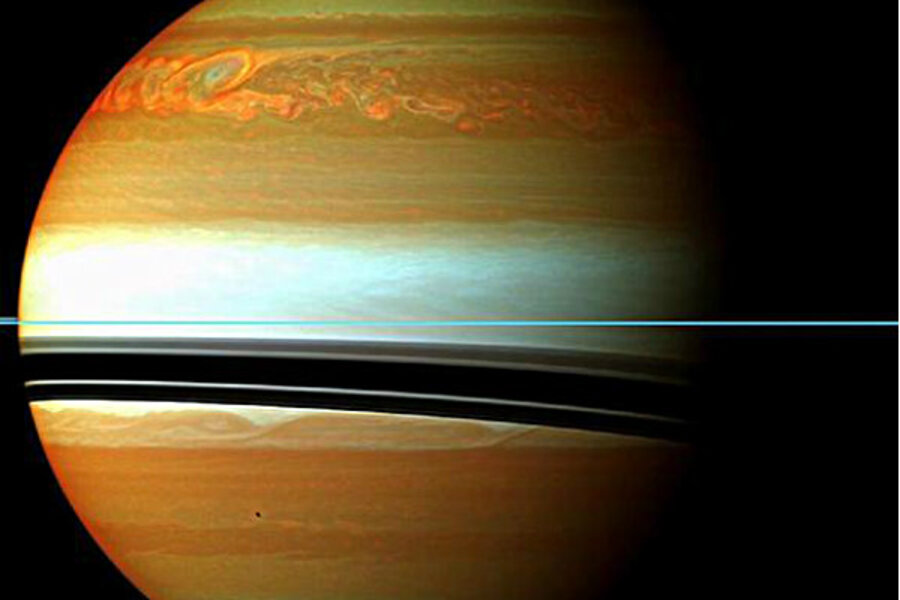NASA probe spots bizarre lightning storm on Saturn
Loading...
A NASA spacecraft orbiting Saturn has captured an amazing view of lightning in broad daylight on the ringed planet.
The Cassini orbiter captured the daytime lightning on Saturn as bright blue spots inside a giant storm that raged on the planet last year. NASA unveiled the new Saturn lightning photos Wednesday (July 18), adding that the images came as a big surprise.
"We didn't think we'd see lighting on Saturn's day side —only its night side," said Ulyana Dyudina, a Cassini imaging team associate at the California Institute of Technology in Pasadena, in a statement. "The fact that Cassini was able to detect the lightning means that it was very intense."
Cassini spotted the daytime lightning while observing a giant Saturn storm on March 6, 2011. A blue filter on the spacecraft's main camera recorded the lightning flashes, and scientists then exaggerated the blue tint in order to pin down the lightning's location and size, researchers said. [More Photos of Saturn's Monster Storm]
The Saturn lightning in Cassini's new images apparently packs quite a wallop. An analysis of the new images revealed that the energy from the visible lightning flashes alone could have spiked up to 3 billion watts over one second. That makes the daytime Saturn lightning on par with some of the strongest lightning flashes on Earth.
Cassini mission scientists said the lightning on Saturn was spotted across a region 100 miles (160 kilometers) wide where it exited the cloud layer. In all, Cassini spotted eight daytime lightning flashes on Saturn, five in one part of the storm and three in an another, they added.
The lightning-spawning storm on Saturn was not a short-lived tempest. The storm wrapped completely around Saturn at its peak and is the longest-lived storm ever seen on the ringed planet. It began in December 2010 and lasted about 200 days, finally sputtering out in late June 2011.
One mystery that remains is why the daytime Saturn lightning only turned up in Cassini's blue imaging filter. Scientists aren't sure if that means the lightning is actually blue in color, or if it's due to a short exposure time of the camera that helps the camera filter detect the lightning.
"As summer storm season descends upon Earth's northern latitudes, Cassini provides us a great opportunity to see how weather plays out at different places in our solar system," Cassini project scientist Linda Spilker, of NASA's Jet Propulsion Laboratory in Pasadena, Calif., said in a statement. "Saturn's atmosphere has been changing over the eight years Cassini has been at Saturn, and we can't wait to see what happens next."
NASA's Cassini spacecraft launched in 1997 and has been orbiting Saturn since 2006. The spacecraft is currently in an extended mission that is expected to last through 2017.
Meanwhile, Saturn is currently visible in Earth's night sky. It can be seen in the western evening sky with Mars and the bright star Spica in July, weather permitting.
Follow SPACE.com on Twitter @Spacedotcom. We're also on Facebook and Google+.
- Photos: Most Powerful Storms of the Solar System
- Saturn Quiz: How Well Do You Know the Ringed Planet?
- Photos: Amazing Lightning Flashes of Electric Earth
Copyright 2012 SPACE.com, a TechMediaNetwork company. All rights reserved. This material may not be published, broadcast, rewritten or redistributed.







